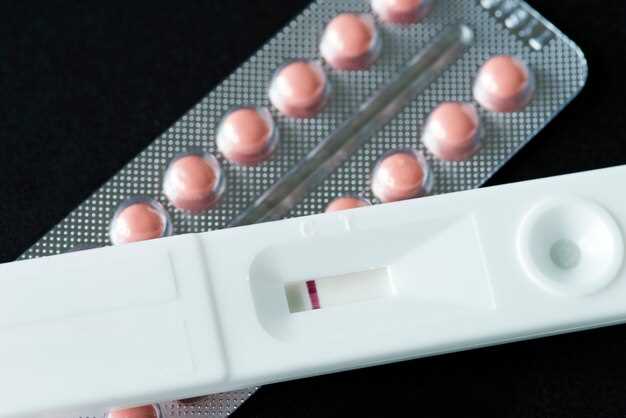
Are you struggling to find the right statin medication for your cholesterol management?
Look no further!
Atorvastatin to Lovastatin Conversion offers a simple and effective solution.
Atorvastatin and Lovastatin are two commonly prescribed statins that help lower cholesterol levels. However, finding the right dosage and switching between the two can be confusing.
Our expert team has developed a comprehensive guide that helps you seamlessly convert from Atorvastatin to Lovastatin without compromising your cholesterol management.
With our Atorvastatin to Lovastatin Conversion guide, you’ll gain:
– Clear instructions on dosage conversion
– Professional advice on timing and monitoring
– Tips to ensure a smooth transition
Regulate your cholesterol levels with confidence.
Choose Atorvastatin to Lovastatin Conversion and experience optimal cholesterol management today!
Challenges of Lovastatin
Lovastatin is a medication that belongs to the class of drugs called statins. While it is effective in reducing cholesterol levels, there are several challenges associated with its use.
- Effectiveness: Lovastatin may not be as effective as other statins, such as atorvastatin, in lowering cholesterol levels. Studies have shown that atorvastatin may provide a greater reduction in LDL cholesterol levels compared to lovastatin.
- Side Effects: Like all medications, lovastatin can cause side effects. Common side effects of lovastatin include muscle pain, weakness, and liver problems. It is important to report any unusual or severe side effects to a healthcare professional.
- Dosage: Lovastatin is available in different dosage forms, including immediate-release tablets and extended-release tablets. The appropriate dosage of lovastatin depends on several factors, such as the individual’s cholesterol levels and medical history. It is crucial to follow the prescribed dosage and directions provided by a healthcare professional.
- Drug Interactions: Lovastatin may interact with other medications, increasing the risk of side effects. It is important to inform a healthcare professional about all medications, supplements, and herbal products being taken to avoid potential interactions.
- Dietary Restrictions: Lovastatin may require certain dietary restrictions, such as avoiding grapefruit and grapefruit juice. Grapefruit can interfere with the metabolism of lovastatin, potentially increasing the risk of side effects.
Despite these challenges, lovastatin remains a valuable medication for treating high cholesterol. However, it is essential to work closely with a healthcare professional to ensure its safe and effective use.
Challenges of Lovastatin
Lovastatin, also known as Mevacor, is a commonly used statin medication used to lower cholesterol levels in the body. While lovastatin has proven to be effective in reducing LDL cholesterol and preventing cardiovascular diseases, it also comes with a set of challenges that need to be considered.
One of the main challenges of using lovastatin is its potential for drug interactions. Lovastatin is metabolized by the liver enzyme CYP3A4, and it can interact with other medications that inhibit or induce this enzyme. This means that lovastatin may interact with common medications like erythromycin, clarithromycin, and grapefruit juice, leading to adverse effects or reduced efficacy.
Another challenge with lovastatin is its limited effectiveness in comparison to other statins. Lovastatin has a relatively low potency compared to newer statins such as atorvastatin. This means that higher doses of lovastatin may be needed to achieve the desired cholesterol-lowering effects, which can increase the risk of side effects.
Furthermore, lovastatin is known to have a higher incidence of gastrointestinal side effects, such as nausea, constipation, and abdominal pain, compared to other statins. This can make it less tolerable for some patients and may lead to poor adherence to the medication regimen.
Lastly, lovastatin requires regular liver function monitoring due to the risk of liver toxicity. This requires additional healthcare resources and can be burdensome for patients who need to undergo frequent blood tests.
Despite these challenges, it’s important to note that lovastatin can still be an effective medication for certain individuals. However, it’s crucial to work closely with a healthcare professional to carefully monitor the potential risks and benefits associated with its use.
| Challenges of Lovastatin |
|---|
| Potential for drug interactions |
| Relatively low potency compared to other statins |
| Higher incidence of gastrointestinal side effects |
| Requires regular liver function monitoring |
Comparison of Atorvastatin and Lovastatin
When it comes to choosing between Atorvastatin and Lovastatin, it is important to understand the key differences and similarities between these two medications. Here is a detailed comparison:
1. Mechanism of Action

Both Atorvastatin and Lovastatin belong to the class of drugs known as statins. They work by blocking the enzyme HMG-CoA reductase, which is responsible for producing cholesterol in the liver. However, Atorvastatin is more potent and effective in reducing cholesterol levels compared to Lovastatin.
2. Efficacy
Studies have shown that Atorvastatin is generally more effective in lowering LDL cholesterol levels and increasing HDL cholesterol levels compared to Lovastatin. It has also been found to have a greater impact on reducing the risk of cardiovascular events, such as heart attack and stroke.
3. Dosage
The recommended dosage of Atorvastatin is generally lower compared to Lovastatin. This means that a lower dose of Atorvastatin may be required to achieve the desired cholesterol-lowering effects compared to Lovastatin.
4. Side Effects

Both Atorvastatin and Lovastatin can cause side effects, although they are generally well-tolerated. Common side effects include muscle pain, liver enzyme abnormalities, and digestive issues. However, Atorvastatin has been associated with a slightly higher risk of developing muscle-related side effects compared to Lovastatin.
5. Drug Interactions
Both Atorvastatin and Lovastatin can interact with certain medications, increasing the risk of side effects. It is important to inform your doctor about all the medications you are taking to avoid any potential interactions.
Overall, while both Atorvastatin and Lovastatin are effective cholesterol-lowering medications, Atorvastatin is generally considered to be more potent and has a greater impact on reducing the risk of cardiovascular events. However, the choice between these two medications ultimately depends on individual factors, such as medical history, current medications, and overall health.
How to Convert Atorvastatin to Lovastatin
Converting from Atorvastatin to Lovastatin can be done under the supervision of a healthcare professional. Here are the steps to convert from Atorvastatin to Lovastatin:
- Consult your healthcare provider: Before making any changes to your medication regimen, it is essential to speak with your healthcare provider. They will assess whether converting to Lovastatin is appropriate for your individual needs.
- Review your medical history: Your healthcare provider will review your medical history to ensure that Lovastatin is safe and suitable for you.
- Determine the appropriate dosage: Your healthcare provider will calculate the appropriate dosage of Lovastatin based on factors such as your current Atorvastatin dose, your cholesterol levels, and any other relevant medical conditions.
- Follow the conversion plan: Once your healthcare provider has determined the appropriate dosage, they will provide you with a conversion plan. This plan will outline how to gradually decrease your Atorvastatin dosage while simultaneously increasing your Lovastatin dosage. It is essential to follow this plan precisely to ensure a smooth transition.
- Monitor your cholesterol levels: Throughout the conversion process, your healthcare provider will monitor your cholesterol levels to ensure that they remain within a healthy range. They may make adjustments to your dosage if necessary.
- Stay consistent with your medication schedule: It is important to take your Lovastatin medication exactly as prescribed by your healthcare provider. Consistency is key to maximizing the benefits of the medication.
- Report any side effects: While converting from Atorvastatin to Lovastatin, it is crucial to be aware of any potential side effects and report them to your healthcare provider. They will evaluate your symptoms and make any necessary adjustments to your medication.
- Follow up with your healthcare provider: After converting to Lovastatin, it is important to schedule regular follow-up appointments with your healthcare provider. They will continue to monitor your cholesterol levels and overall health to ensure that Lovastatin is effectively managing your condition.
Remember, the conversion process from Atorvastatin to Lovastatin should only be done under the guidance of a healthcare professional. They will provide individualized care and guidance to ensure a safe and successful transition.
